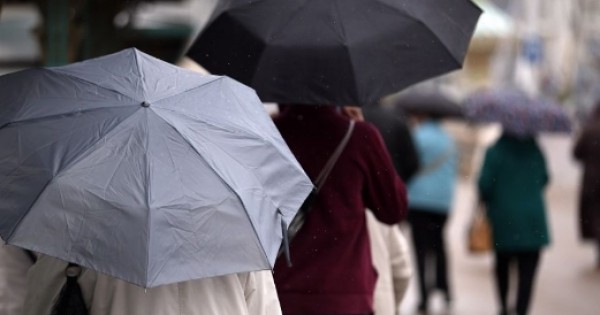
Hypothermia: causes, symptoms, diagnosis and treatment in first aid
Hypothermia is a dangerous medical emergency involving low body heat. It is caused by prolonged exposure to cold temperatures
When exposed to a cold environment, the human body loses body heat faster than it produces it.
Prolonged exposure to cold will eventually use up your body’s stored energy, which leads to a lowering of your core body temperature.
Other factors and conditions can increase the risk of hypothermia, including extremes of age and specific health conditions, such as malnutrition.
Symptoms and first aid treatment for hypothermia
The stages of hypothermia range from mild to severe hypothermia.
Even the mild stage is an emergency.
This is why it is essential to call the Emergency Number if you notice its signs.
While waiting for the emergency medical services team to arrive, it is essential to give first aid to increase the chances of survival.
First aid treatment involves getting the person to a warm, dry place and removing clothing.
The graphic representation below shows the symptoms and first aid advice for hypothermia:
Symptoms and signs of hypothermia
Hypothermia can be differentiated into three stages: mild hypothermia, moderate hypothermia or severe hypothermia.
The symptoms and signs of hypothermia can be roughly grouped with the temperature ranges of the different phases:
- Drop in body temperature below 35 °C for mild hypothermia, below 32 °C for moderate hypothermia and below 27 °C for severe hypothermia.
- Exhaustion or drowsiness
- Loss of consciousness
- Numb hands and feet
- Shortness of breath
- Confusion, memory loss or slurred speech
- Chills
- Weak pulse
- Hypertension, rapid heartbeat and constriction of blood vessels
First aid for hypothermia
First aid treatment depends on the degree of hypothermia, but the aim is to warm the person up.
Anyone with symptoms of hypothermia needs immediate medical attention.
The first responder can do the following while waiting for the emergency medical services team to arrive.
- Take the hypothermic person indoors.
- Remove wet clothing and dry the person
- Warm the hypothermic person’s torso first, not hands and feet. Do not use direct heat, such as a heating lamp, to warm the person.
- For someone with mild or moderate hypothermia, warm the person by wrapping them in blankets or wearing dry clothes.
- Do not immerse the hypothermic person in hot water. Rapid heating can cause cardiac arrhythmias.
- If hot water bags or a chemical heating pad are used, wrap them in a cloth. Do not apply them directly to the skin.
- If someone has severe hypothermia and may be unconscious, start CPR immediately. Do not stop, even in a patient who appears dead, until the core body temperature is above 89.6 °F (30 °C to 32 °C) and still no signs of life.
- If the hypothermic person is conscious, give him or her a hot drink. Avoid caffeine or alcohol because it increases the risk of hypothermia.
- Once the body temperature rises, keep the hypothermic person dry and wrapped in a warm blanket.
- When advanced medical care is available, health workers will continue warming efforts, including the administration of intravenous fluids and warm, moist oxygen. Severe hypothermia is treated medically with warm fluids and often saline solution injected into the veins.
Per approfondire
Emergency Live Even More…Live: Download The New Free App Of Your Newspaper For IOS And Android
How To Treat Skin Burn Victims With CPR And First Aid
Fires, Smoke Inhalation And Burns: Symptoms, Signs, Rule Of Nine
Calculating The Surface Area Of A Burn: The Rule Of 9 In Infants, Children And Adults
First Aid, Identifyng A Severe Burn
Chemical Burns: First Aid Treatment And Prevention Tips
Electrical Burn: First Aid Treatment And Prevention Tips
6 Facts About Burn Care That Trauma Nurses Should Know
Blast Injuries: How To Intervene On The Patient’s Trauma
What Should Be In A Paediatric First Aid Kit
Compensated, Decompensated And Irreversible Shock: What They Are And What They Determine
Burns, First Aid: How To Intervene, What To Do
First Aid, Treatment For Burns And Scalds
Wound Infections: What Causes Them, What Diseases They Are Associated With
Patrick Hardison, The Story Of A Transplanted Face On A Firefighter With Burns
Electric Shock First Aid And Treatment
Electrical Injuries: Electrocution Injuries
Emergency Burn Treatment: Rescuing A Burn Patient
Disaster Psychology: Meaning, Areas, Applications, Training
Intervening In First Aid: Good Samaritan Law, All You Need To Know
Notions Of First Aid: What A Defibrillator Is And How It Works
How To Use An AED On A Child And An Infant: The Paediatric Defibrillator
Neonatal CPR: How To Perform Resuscitation On An Infant
Pediatric CPR: How To Perform CPR On Pediatric Patients?
Cardiac Abnormalities: The Inter-Atrial Defect
What Are Atrial Premature Complexes?
ABC Of CPR/BLS: Airway Breathing Circulation
What Is Heimlich Maneuver And How To Perform It Correctly?
First Aid: How To Do The Primary Survey (DR ABC)
How To Carry Out Primary Survey Using The DRABC In First Aid
What Should Be In A Paediatric First Aid Kit
Does The Recovery Position In First Aid Actually Work?
Supplemental Oxygen: Cylinders And Ventilation Supports In The USA
Heart Disease: What Is Cardiomyopathy?
Defibrillator Maintenance: What To Do To Comply
Defibrillators: What Is The Right Position For AED Pads?
When To Use The Defibrillator? Let’s Discover The Shockable Rhythms
Who Can Use The Defibrillator? Some Information For Citizens
Defibrillator Maintenance: AED And Functional Verification
Myocardial Infarction Symptoms: The Signs To Recognise A Heart Attack
What Is The Difference Between Pacemaker And Subcutaneous Defibrillator?
What Is An Implantable Defibrillator (ICD)?
What Is A Cardioverter? Implantable Defibrillator Overview
Paediatric Pacemaker: Functions And Peculiarities
Chest Pain: What Does It Tell Us, When To Worry?
Cardiomyopathies: Definition, Causes, Symptoms, Diagnosis And Treatment



